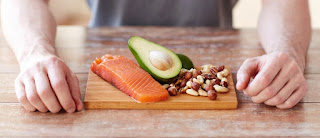What are prohormones?
Prohormones are not steroids. They are unique chemicals that enhance the effects and increase the levels of existing hormones in the body. They are the precursors of hormones and later they form an effective hormone in the body. Prohormones themselves have minimal hormonal effect. The main function is to increase the strength of its own hormones, which are already in the body.
Prohormone is understood as a precursor of an androgenic steroid that converts to an androgen such as testosterone. For example, testosterone is an active androgen, and androstenedione is its prohormone.
Prohormones versus anabolic steroids - Are prohormones banned?
Prohormones are essentially a weaker form and support of anabolic steroids. The main difference between prohormones and anabolic steroids is that it is often presented that anabolic steroids are illegal, while prohormones are legal. However, this is not the case. According to Slovak and EU legislation, these substances are prohibited. This is because these substances are not on the permitted list, which means that the clinical safety of the effects has not been verified and therefore they must not be placed on the market.
Are prohormones allowed in the US?
You may also find that in the US, prohormones are labeled as a dietary supplement, with a "dietary supplement" on the packaging. And here you ask yourself the question: "if they can use it in the USA and it won't hurt them and it's a nutritional supplement there, then I'll try it too." However, this does not mean that prohormones are allowed in the US. According to our latest information, some prohormones are also banned in the USA !!! Notice the “MADE IN USA - for export only” tag on the prohormone package. This means that these products are exclusively for export from the USA.
Are prohormones safe?
Because anabolic steroids are banned worldwide, manufacturers have tried to circumvent this ban by producing steroid precursors - prohormones. So instead of raw testosterone injection, you will use a testosterone precursor that will increase the production of your own testosterone in your body. This prohormone supplementation is presented as safer, as there is no risk of an extreme amount of hormone ingested than in injectable dosing. But there is also one catch. Because there are not yet enough clinical studies, it is not possible to confirm that prohormones are safer. And that is why they are banned in both the EU and the US.
Benefits and effects of prohormones
Prohormones offer a number of benefits for improving various sports performances, including a dramatic improvement in strength, muscle mass and, last but not least, an increase in sexual desire.
Increase muscle mass
Increase muscle strength
Improving physical appearance
Faster and better regeneration
Better sports performance
Improving sexual fitness
Voice deepening
Strength and hardness of muscle mass
More defined facial jaw
All of these benefits are associated with an increase in testosterone. If you are an athlete and you are tested, you may be doping positive. This is due to testosterone levels above the level of respect by the anti-doping organization. Detection of this increased value can take several hours, but also several days.
As prohormones significantly improve protein synthesis, it is necessary to take nutritional supplements such as protein, glutamine, arginine and gainer. For a more effective and stronger effect of prohormones, it is appropriate to use products such as ZMA (Zinc, Magnesium, Vitamin B6) and HMB for better sleep, regeneration, anabolic effect and cessation of catabolism. We also recommend adding Tribulus Terrestris to prohormones for increased testosterone production. It is ideal to combine prohormones with these nutritional supplements:
Protein
Gainer
ZMA
HMB
Glutamine
Tribulus Terrestris
Arginine
Prohormone side effects
Prohormones, as precursors of anabolic hormones in the body, support the production of its own hormones. Therefore, hormonal imbalances can occur in the body and associated various side effects such as: acne, hypertension, prostate problems, hair loss, headaches, dizziness, nausea, gynecomastia. Another disadvantage may be the chemical composition of the prohormone. Some prohormones are methyl in nature and therefore toxic to the liver.
HOW TO ELIMINATE NEGATIVE EFFECTS
When stopping the use of prohormones, there may be an undesirable decrease in the production of self-testosterone and consequently higher estrogen production. This may be associated with a reduction in muscle mass. The principle is to get the body into a state of its own natural testosterone production.
THE MOST IMPORTANT PART IS PCT - POST CYCLE THERAPY
Post Cycle Therapy (PCT) is one of the most important parts of any hormonal cycle. Not only steroids but also prohormones change the state of hormones in the body. If they stop taking it, their own testosterone production is reduced and there is a risk of a reduction in muscle mass and a number of other problems. There are a variety of PCT products. We recommend the effective Arimi T product, which even acts as an antioxidant. They are natural substances to boost your own testosterone production. This is where protection and retention of already gained muscle mass is created.
HOW TO PROTECT YOUR LIVER
Some prohormones are methyl in nature. Therefore, they are toxic to the liver. In this case, it is necessary to take various antioxidants at the same time, eat healthily with the amount of vegetables and fruits ingested, which significantly eliminate toxicity.
We also recommend products that are suitable for sufficient liver protection while taking prohormones:
Milk Thistle - Marian Milk Thistle
ALA - Alpha lipoic acid
Green extract - extract from green tea
lecithin
Complex Antioxidant Extreme
MOST POPULAR PROHORMONES WITH MINIMUM SIDE EFFECTS
ATD (1,4,6-ANDROSTATRIEN, 3-17-DIONE)
is a potent aromatase inhibitor that promotes testosterone production. As an aromatase inhibitor, it helps maintain estrogen and thus prevents testosterone from aromatizing to estrogen. It works by ATD inhibiting estrogen biosynthesis by binding and inactivating the enzyme aromatase. Testosterone levels also increase naturally by reducing its conversion to estrogen. Another advantage of ATD is that it has 90% androgenic activity in muscle tissue and only 10% in the hypothalamus. Therefore, you should build more muscle mass. In addition, ATD negatively blocks the androgen feedback loop, which reduces estrogen production while increasing testosterone production.
MAX-LMG (3-ETHYL-3-METHOXY-GONA-2,5 (10) DIEN-17-ONE)
Max LMG is an unmethylated progestin. Therefore, you do not have to worry about liver damage. It is designed especially for exercisers whose goal is hypertrophy, muscle strength and at the same time want maximum hardness and muscle pumping. Max LMG does not flavor, so you do not have to worry about unpleasant estrogenic side effects such as gynecomastia or water retention. It is also an anti-progesterone, which means that it suppresses the activity of progesterone in the body
DMZ (17B-HYDROXY-2A, 17B-DIMETHYL-5A-ANDROSTAN-3,3-AZINE)
The anabolic / androgenic ratio is certainly worth mentioning, which in this case represents a value of 210/95. DMZ is one of the best-selling prohormones in the United States because it is one of the strongest prohormone compounds on the market. In addition to its incredibly effective power, it is unique in another area and that is its security. It ranks among the Prohormones with the lowest risk of negative side effects. In the published study, subjects were given DMZ for more than 45 days. In 50% of the subjects, the liver test values did not change at all, while in the remaining 50% these values increased only slightly. DMZ has a 0% ability to flavor, which means you don't have to worry about estrogenic effects in your body.



